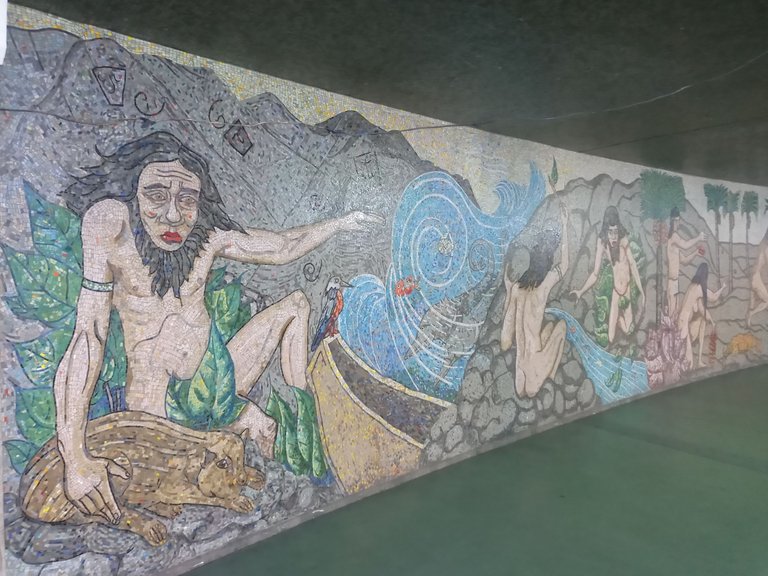
HOLAAAA. Como están comunidad esperó estén muy bien, estos últimos días no he podido publicar contastemente por que he tenido muchas actividades en la universidad😓. Las instalaciones han tenido problemas y he estado ayudando al personal encargado de la reparación de los espacios.
hello community very good, these last few days I have not been able to publish constantly because I have had many activities at the university😓. The facilities have had problems and I have been helping the staff in charge of repairing the spaces.

El día de hoy les traigo una de las mejores historias de mi país Venezuela la cual el artista y dramaturgo Cesar Rengifo llevo a las ciudades de caracas. Estoy hablándoles del mito de Amalivaca el padre del mundo 🌎.
Today I bring you one of the best stories from my country Venezuela, which the artist and playwright Cesar Rengifo brought to the cities of Caracas. I am talking to you about the myth of Amalivaca, the father of the world 🌎.

Cuanta la leyenda qué cerca del río cuchivero él cual está al norte del estado Bolívar, existió una tribu indígena conocido como los tamanaco.
Legend has it that near the Cuchivero River, which is north of the state of Bolívar, there was an indigenous tribe known as the Tamanaco.

La historia nos dice que hubo un diluvio que arrasó con los pobladores tamanaco de los cuales solo una mujer y un hombre sobrevivieron al subir a la punta de una montaña, aferrándose a una palma de moriche, soportando así el terrible suceso.
History tells us that there was a flood that devastated the Tamanaco settlers, of whom only a woman and a man survived by climbing to the top of a mountain, clinging to a moriche palm, thus enduring the terrible event.

A lo lejos, entre los restos de lo que quedó del probado indígena, los sobrevivientes vieron llegar una canoa con cuatro personas en ella, una de las personas que llego en la canoa fue descrito como un hombre blanco de larga barba y de gran estatura haciendo referencia al dios indígenas padre del mundo, Amalivaca.
In the distance, among the remains of what was left of the proven indigenous, the survivors saw a canoe arrive with four people in it, one of the people who arrived in the canoe was described as a white man with a long beard and a tall stature doing reference to the indigenous god father of the world, Amalivaca.

El cual llegó con su hermano y sus hijas. La pareja le pide al dios que los salvará, a lo el dios accede. Acto seguido amalivaca y su hermano Ouchí reconstruyen el mundo, esculpiendo montañas ⛰ y controlando las aguas para reformar los ríos y trayendo de esta manera mucha abundancia natural al mundo.
Who arrived with his brother and his daughters. The couple asks the god to save them, to which the god agrees. Immediately afterwards Amalivaca and his brother Ouchí reconstruct the world, sculpting mountains ⛰ and controlling the waters to reform the rivers and thus bringing much natural abundance to the world.

Amalivaca le dice a la pareja que reconstruyan su pueblo tamanaco. De la palma de moriche nace el fruto de moriche, el dios les dice que deben arrojar el fruto de la palma sobre sus cabeza a la tierra, de cada una de las semillas del fruto nace un hombre y una mujer tamanaco de piel rojiza como la tierra. Las hijas del dios como les gustaba mucho viajar con su padre y se desplazavan mucho, el dios les quiebra las piernas 🦵 y ellas dejan de moverse, esto con la finalidad de que los hombres de la población tamanaco se pudieran reproducir y multiplicarse en sobre la nueva tierra 🌎. El dios les enseña a los poblados a vivir en armonía con la naturaleza y les otorga conocimientos de como tratarla, cuando el dios se va a marchar les dice a la población las palabras "uopicachetpe mapicatechí", lo que se traduce a "mudarán únicamente la piel", lo que el dios les entrega la inmortalidad de manera inmediata.
Amalivaca tells the couple to rebuild their Tamanaco town. The moriche fruit is born from the moriche palm, the god tells them that they must throw the fruit of the palm over their heads to the ground, from each of the seeds of the fruit a Tamanaco man and woman are born with reddish skin like the land. The daughters of the god loved to travel with their father and moved around a lot, the god broke their legs 🦵 and they stopped moving, this was so that the men of the Tamanaco population could reproduce and multiply on the new land 🌎. The god teaches the villages to live in harmony with nature and gives them knowledge of how to treat it. When the god is going to leave, he tells the population the words "uopicachetpe mapicatechí", which translates to "they will only change the skin", which the god gives them immortality immediately.

Pero una mujer anciana incrédula de las palabras de dios se burla de lo que el dios les dice, Amalivaca ofendido se enfurece por la insolencia de la anciana y les dice "mattageptechí" lo que se traduce a "morirán", despojandolos así de la inmortalidad. y de esta forma termina la historia del dios Amalivaca el cual reformó el mundo.
But an old woman, incredulous of God's words, mocks what the god tells them. Amalivaca, offended, becomes enraged by the old woman's insolence and tells them "mattageptechí" which translates to "they will die", thus stripping them of immortality. . and in this way ends the story of the god Amalivaca who reformed the world.

Esta historia que mencanto mucho por la magnitud cultural y artística que tiene, en como vamos conociendocada vez más nuestra identidad como creadores.
I love this story a lot because of the cultural and artistic magnitude it has, in how we get to know our identity as creators more and more.

El artista cesar rengifo recreo está historia en un mural que es encuentra en la plaza Diego Ibarra en la estación 🚉 de capitolio en caracas. El mural echo de cerámica tutulada el mito de Amalivaca, el mural inició en el año 1954 y terminó en el 55 y tuvo una restauración en el 2006. El maestro y artistas Cesar rengifo de sienta firma nos hace recordar parte de usted historia como venezolanos y como artistas atravez la historia del dios amalivaca. Yo como estudiante de arte cayó la estética de este mural como una ascendencia por la identidad y un pensamiento libre sobre sobre la religión ya que en esta gran historia la imagen de dios cambia completamente aunque tienen mucha similitud.
The artist Caesar Rengifo recreates this story in a mural that is found in Plaza Diego Ibarra at the Capitol 🚉 station in Caracas. The mural made of ceramic titled the myth of Amalivaca, the mural began in 1954 and finished in 1955 and had a restoration in 2006. The teacher and artists Cesar Rengifo of the firm makes us remember part of your history as Venezuelans and as artists through the history of the Amalivaca god. As an art student, I saw the aesthetics of this mural as an ancestry of identity and free thought about religion since in this great story the image of God changes completely although they have a lot of similarity.

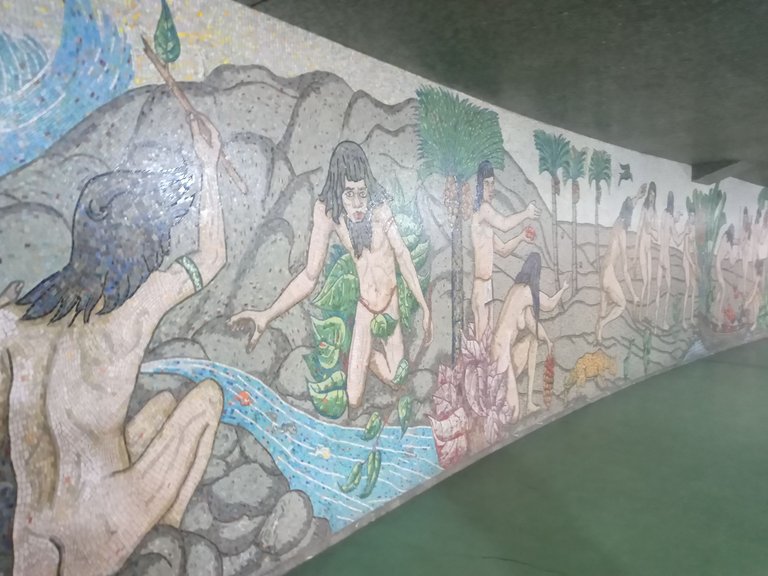
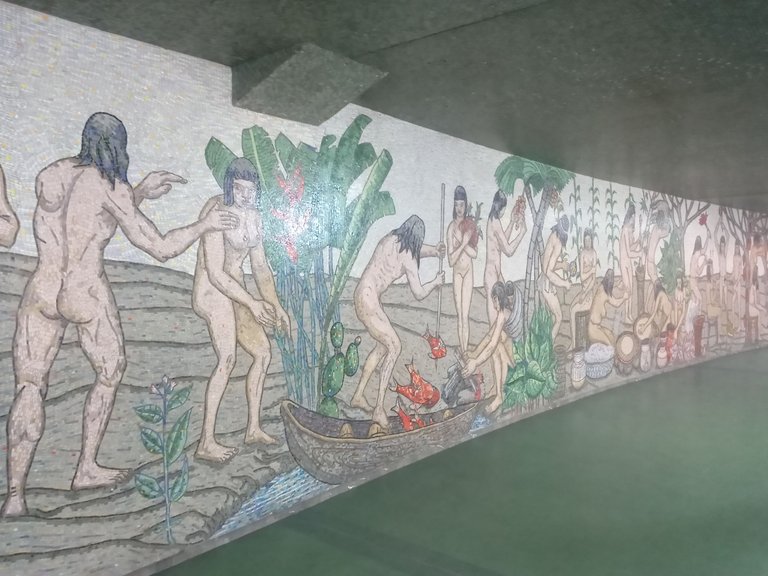
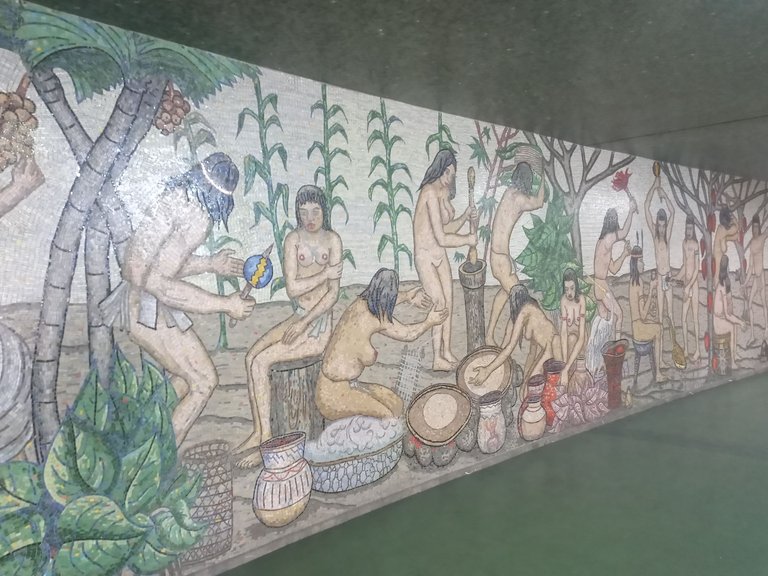

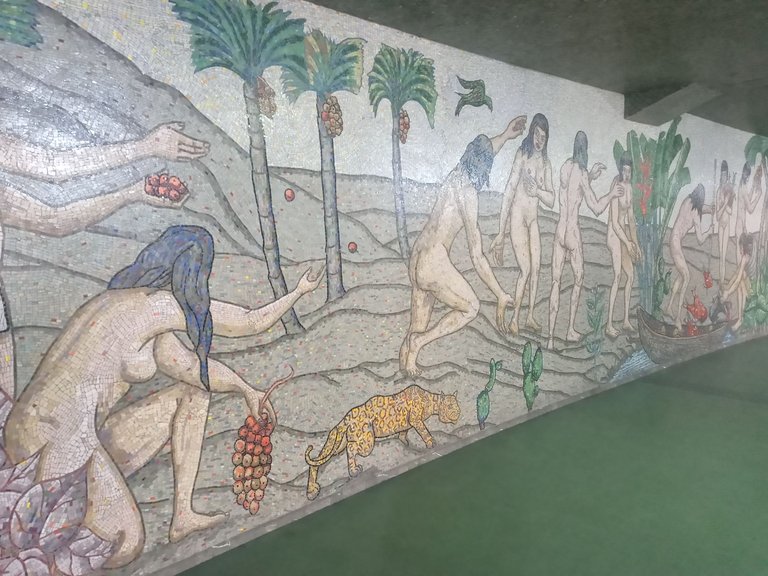
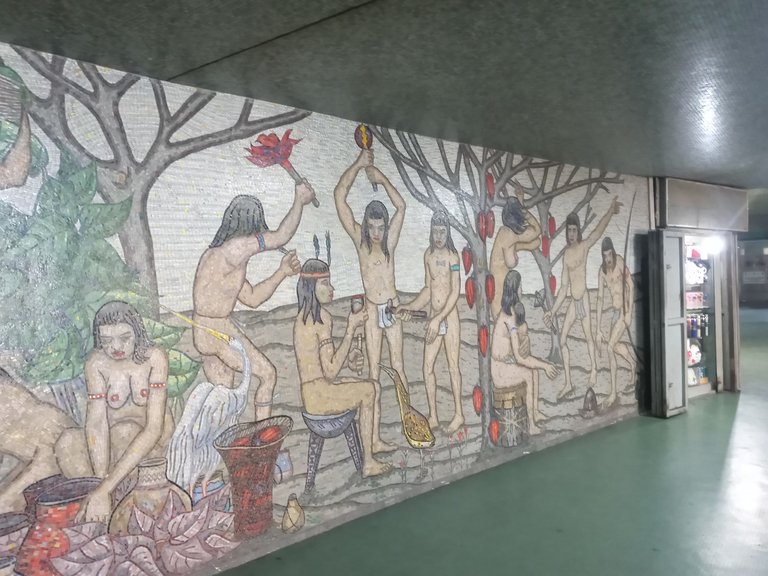

Como pensador después de ver este mural, me di cuenta que el arte también es una identidad que tenemos que contuir para poder transmitir nuestro mensaje.
As a thinker after seeing this mural, I realized that art is also an identity that we have to carry in order to transmit our message.
Gracias por compartir esta experiencia con migo comicidad 😊🎨❤.
Thank you for sharing this experience with my comic 😊🎨❤.

Instagram: @picotaArt
Traducción: Google traductor.
Translation: Google translator.
Por aquí les dejo un link de un video del mural. Que lo disfruten😊👋.
Here I leave you a link to a video of the mural. Enjoy it😊👋.
Congratulations @picotart! You have completed the following achievement on the Hive blockchain And have been rewarded with New badge(s)
Your next target is to reach 1500 upvotes.
You can view your badges on your board and compare yourself to others in the Ranking
If you no longer want to receive notifications, reply to this comment with the word
STOP